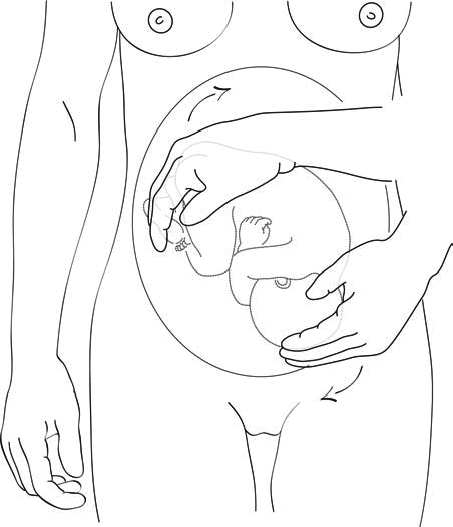Contenido
A procedure to convert:
- a transverse lie into a longitudinal (cephalic or breech) presentation,
or
- a breech presentation into a cephalic presentation.
7.7.1 Conditions
- Pregnancy near term (37 weeks LMP)
- Prior to labour, or at the very start of labour
- Relaxed uterus
- No obstacle to vaginal delivery
- Membranes intact
External version is very rarely associated with complications. Complications have, however, been reported (placental abruption, rupture of a scarred uterus and foeto-maternal haemorrhage). Therefore, this manoeuvre should only be attempted in a CEmONC facility.
7.7.2 Contra-indications
Absolute
- Placenta praevia or other obstacle to vaginal delivery (tumour, fibroid)
- Twin pregnancy (for the first twin)
Relative
- Foetal distress
- Severe intrauterine growth restriction
- Prematurity
- Scarred uterus
- Untreated HIV infection
Note: in the event of transverse lie when referral is not possible, in the interest of the mother external version may be attempted to permit vaginal delivery, without taking into account relative contra-indications.
7.7.3 Technique
- Woman lying on her back, legs half bent, bladder empty.
- Perform when the uterus is relaxed.
- First, push back the breech or shoulder, which is often down in the pelvis (vertical movement), then attempt rotation slowly, and always in the direction of foetal flexion: thus bringing either the head or the breech to the pelvic inlet by the shortest possible route (Figures 7.2).
- Monitor the foetal heart rate after each attempt, and stop if the rate slows. In most cases, foetal heart rate abnormalities improve within 30 minutes.
Figures 7.2 - Version to convert a breech presentation to a cephalic presentation
 |
 |